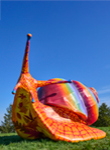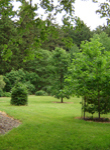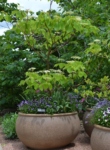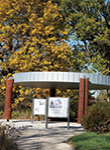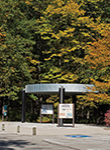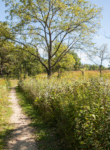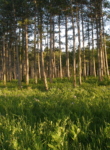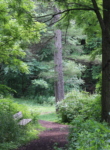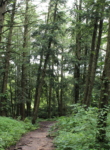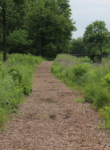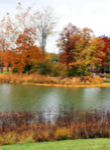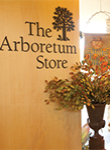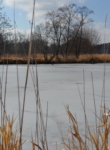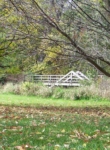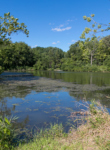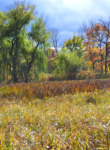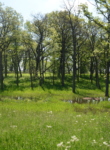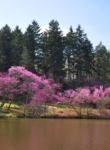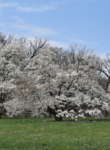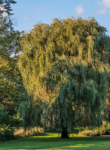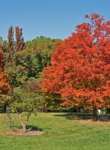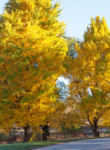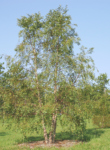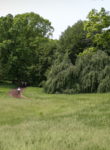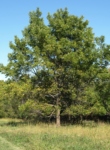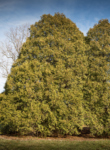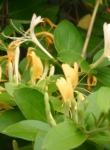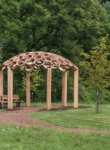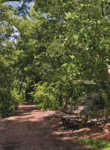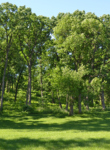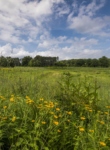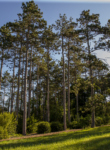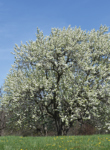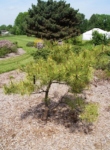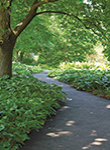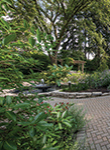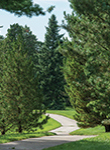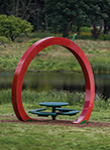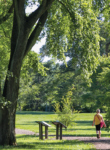Staghorn sumac is often used in mass plantings, for naturalizing, or on steep slopes. Its open habit and hairy stems resemble horns on a male deer, giving it its name.
It is one of the last plants to leaf out in the spring with bright green leaves that change to an attractive yellow, orange, and scarlet in fall.
Among the most recognizable characteristics are large, upright clusters of fuzzy red fruits that appear above the branches in late summer on female plants. They are highly appealing to birds.
This species is native to the Chicago Region according to Swink and Wilhelm’s Plants of the Chicago Region, with updates made according to current research.
More Information
Size and Form
Staghorn sumac is one of the largest native sumacs reaching up to 25 feet tall and wide. A large, open, colony-forming shrub that spreads by runners.
Native Geographic Location and Habitat
Staghorn sumac is native to the eastern and midwestern United States. Often found growing on rocky slopes, dry forest edges, and sandy lake shores. C-Value: 1
Bark Description
Young stems are reddish-brown and densely hairy. Older twigs are stout, and lose their hairiness, but remain brown. Mature bark is thin and gray with raised lenticels. Broken twigs are aromatic when crushed.
Leaf Description
Alternate, large, compound leaves have 11 to 25 leaflets. Each linear leaflet is dark green and hairy above with a smooth, white color beneath. Leaf margins are finely toothed. The leaf stalk (rachis) and petioles are also hairy. One of the last plants to leaf out in spring. Fall color is an outstanding yellow, orange, and scarlet. Leaves are aromatic when crushed.
Flower Description
Dioecious, separate male and female flowers are on separate plants. Large, dense terminal clusters of greenish-yellow, up to 12 inches long appear in June and July.
Fruit Description
Dense, fuzzy clusters of dark red fruits appear in early fall and are often persistent through winter.
Care Knowledge
Plant Care
Staghorn sumac does best in full sun and well-drained soil, although it is very adaptable to most growing conditions, from poor soils to drought conditions. It does not tolerate wet soils. Spreads by root suckers to form large colonies. Unwanted suckers can be mowed or removed to keep plants manageable.
Pests, Diseases and Tolerances
It is susceptible to leaf spots, rust, and verticillium wilt. It is tolerant of black walnut toxicity and salt conditions.
Cultivars
This plant is a cultivar of a species that is native to the Chicago Region according to Swink and Wilhelm’s Plants of the Chicago Region, with updates made according to current research. Cultivars are plants produced in cultivation by selective breeding or via vegetative propagation from wild plants identified to have desirable traits.
Cutleaf staghorn sumac (Rhus typhina ‘Laciniata’):
Wide-spreading and colony forming, this cultivar reaches 8 to 10 feet high and 12 to 15 feet wide. Finely divided green leaves appear fern-like. Orange, red, and yellow fall color.
Tiger Eyes® cutleaf staghorn sumac (Rhus typhina ‘Bailtiger’):
A golden cut-leaf form with chartreuse green leaves that change to yellow, orange, and scarlet in fall. Upright to rounded, it reaches 5 to 6 feet high and wide.




